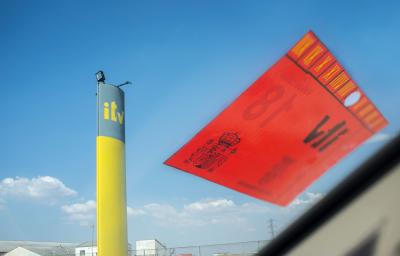The Maserati MC20 Cielo doesn’t just open up to the sun, it’s also the most Italian of all muscle cars. First test on the 630 hp spider!
After the MC20 comes the Maserati MC20 Cielo and therefore heaven on earth. Translated from Italian, Cielo does not mean anything other than heaven. And somehow that’s true in every respect.
The Maserati is a spider that can open and close in seconds up to a speed of 50 km/h, with a Polymer Dispersed Liquid Crystal (or simply, PDLC technology) that dims at a touch on the 10.25-inch screen.
MC20 Design
The true paradise on earth is for those who can afford this supercar that starts from more than 215,000. Maserati designers have achieved a car that is the authentic Italian version of a muscle car.
Unlike the coupé, the shoulders, that is, the rear fenders, are three centimeters wider. The car has two humps on its back that resemble the trapezius muscles of a human bodybuilder.
And that’s exactly the Italian’s secret, that despite all the power he radiates, he doesn’t seem like he’s full of steroids and anabolic steroids. There are no overwhelming spoilers or other aerodynamic add-ons to destroy muscle surfaces. You don’t need it, and subtle details, like at the rear, are enough to ensure a contact pressure of 100 kilograms on the rear axle from 100 km/h.
Engine
The Nettuno engine is developed by Maserati itself, which also powers the coupé. It is a 90-degree twin-turbocharged 6-cylinder that draws its 630bhp from a 3.0-litre displacement and generates a maximum torque of 730Nm.
With five driving modes, the rider can decide how the engine responds and, of course, how it behaves in the corners. It always starts in GT mode, that is, Gran Turismo. So it is comfortable, with a somewhat damped chassis for sporty driving, but a pleasure to travel long distances.
Behaviour
But if you want to have some serious fun, turn the center console switch to the right briefly and finish on Sport. The shock absorbers tighten and the exhaust valves no longer open at 5,000 rpm, but at 3,500.
If you let the eight-speed dual transmission work, you’ll only be using six gears now. Seventh and eighth are just overdrive ratios for “planing” on highways and due to emissions regulations. But the initial six steps are more than enough. The automatic system raises and lowers them in milliseconds, without delay.
But it gets even more heavenly if you turn the driving mode switch a step further to the right or just hold it down for two seconds. Then it goes into Corsa mode, that is, in race mode.
The twin-plug prechamber combustion system, a technology derived from Formula 1, now fires through both, and the exhaust valves are always open.
And then it becomes clear how excellently balanced the Cielo is despite the 65 kilograms more weight due to the electric roof. The pedal features are in the spicier mode and the carbon brakes are already hot.
In the pursuit of comfort, Maserati wanted to avoid merciless bite and therefore prescribed a bit more footwork for the driver. So you have to step hard to stop the 1.6 ton at full speed.
Speaking of speed: the tip is no less than 320 km/h. With a power-to-weight ratio of 0.4 bhp per kilogram, it takes just 2.9 seconds to hit 100 km/h and hit 200 in a ridiculous 9.2 seconds.
However, you have to be careful with lateral acceleration. Traction control is in Corsa mode, as are the suspension and gear settings. I have taken control of the manual change through its large carbon paddles on the equally powerful Alcantara steering wheel.
Turbos inhale and exhale with dreamlike spontaneity. With no artificial additions, the gear changes from the two powerful exhaust pipes reach the ears of those lucky enough to ride inside. The orchestra oscillates between a subliminal growl and an enthusiastic roar depending on the driving schedule and the driver’s ambition.
even more radical
Above the Corsa is another drive program simply called ESC-Off, which leaves all control functions disabled. If you now charge with your right foot, you can be sure the Italian will go sideways with a wonderful squeal of tires.
This is not recommended to be done outside of the race track. The braking force and the force requested through the accelerator pedal are shown in percentages on the 10.25-inch digital display in front of the pilot.
Speaking of screens. The one on the center console is angled toward the driver, but a little low to keep her in sight. The ground clearance can also be increased with a button on the steering wheel, and it proved extremely useful during the test drive on the bumpy Sicilian roads. The front axle is raised 50 millimeters up to a speed of 40 km/h. If it is exceeded, go back down.
conclusion
The best
Performance, design, behaviour, engine response
Worst
Very high price, little dosable brake pedal















